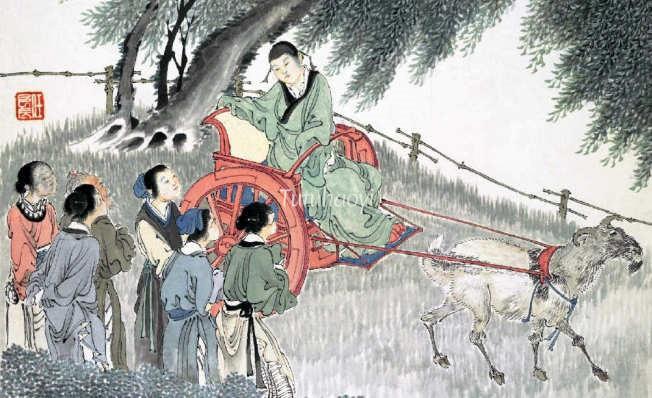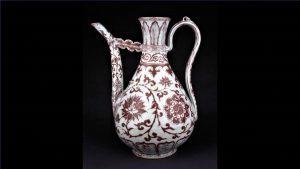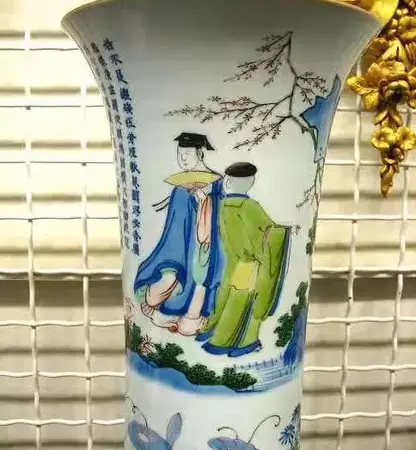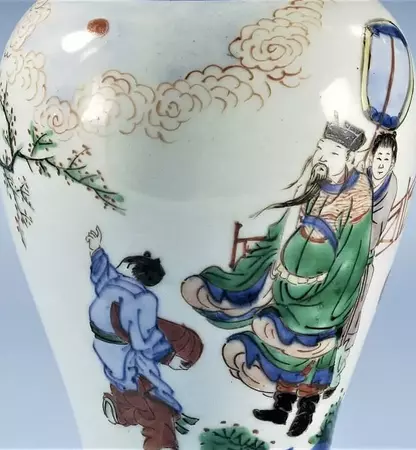Editor: Do you wonder why there is a goat drawing a carriage, rather than a horse, on traditional Chinese art pictures? Why are there so many people watching a handsome man in a chariot? What is the story behind it? Here is what Dr Yibin Ni, a world-renowned art historian, has to tell you.
featured image above: album leaf 《十二生肖图册》 羊车望幸 (sic), ink and colour on paper, Ren Xun (任薰 1835–93), courtesy of Tianjin Art Museum, China
The second half of the third century and the beginning of the fourth century saw a couple of most handsome men in the history of China.
When an adolescent, Pan An (潘安, 247–300) was exceptionally cute and adorable. Women who spotted him in the street would circle around him and throw fruits into his chariot as a fanatic gesture of affection and admiration. He usually returned home with a harvest.
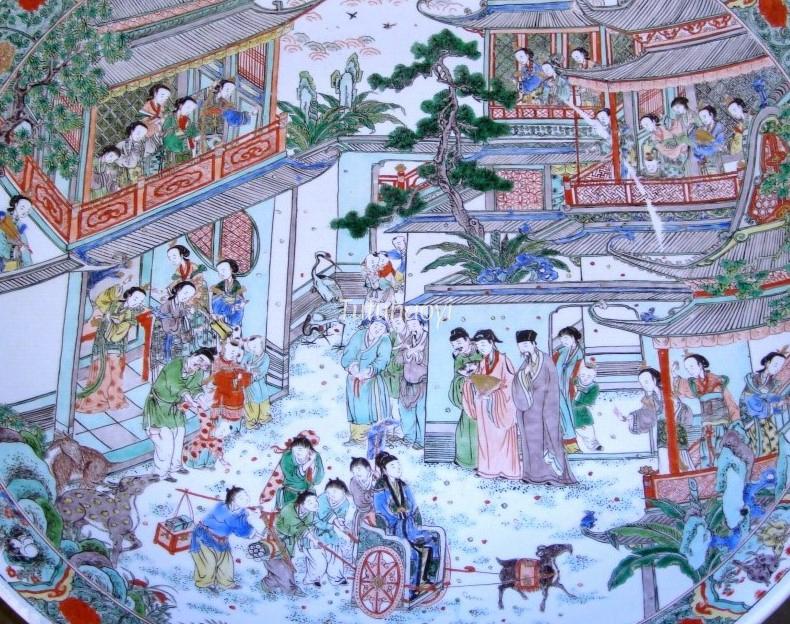

The other is Wei Jie (卫玠, 286–312), who was admired as a “jade man’ when he appeared in his signature goat-drawn carriage in town. Wei Jie shone like a piece of gleaming diamond whichever company he was in.
On 17th century porcelain, the goat-drawn carriage and the fruit-throwing antics from respective historical sources were often combined to form one spectacular story scene. Probably, the apparently attractive visual impact outweighed the consideration of truthfulness to the literature among the market-oriented ceramic painters. However, the late-Ming wood-block print illustration depicted Pan An on a horse-drawn chariot and a late-Qing artist resisted painting fruit-showering in his rendering of Wei Jie.

My research results on this story theme were published in the October issue in the Shanghai-based journal Art World 《艺术世界》 in 2006 (also, Yibin Ni, Kantu Shuoci 《看图说瓷》 [Interpreting Narrative Scenes on Traditional Chinese Decorative Arts], 2008, Beijing), when a catalogue published by the Metropolitan Museum of Art, New York, at that time failed to decipher this scene on their vividly carved ivory brush holder.
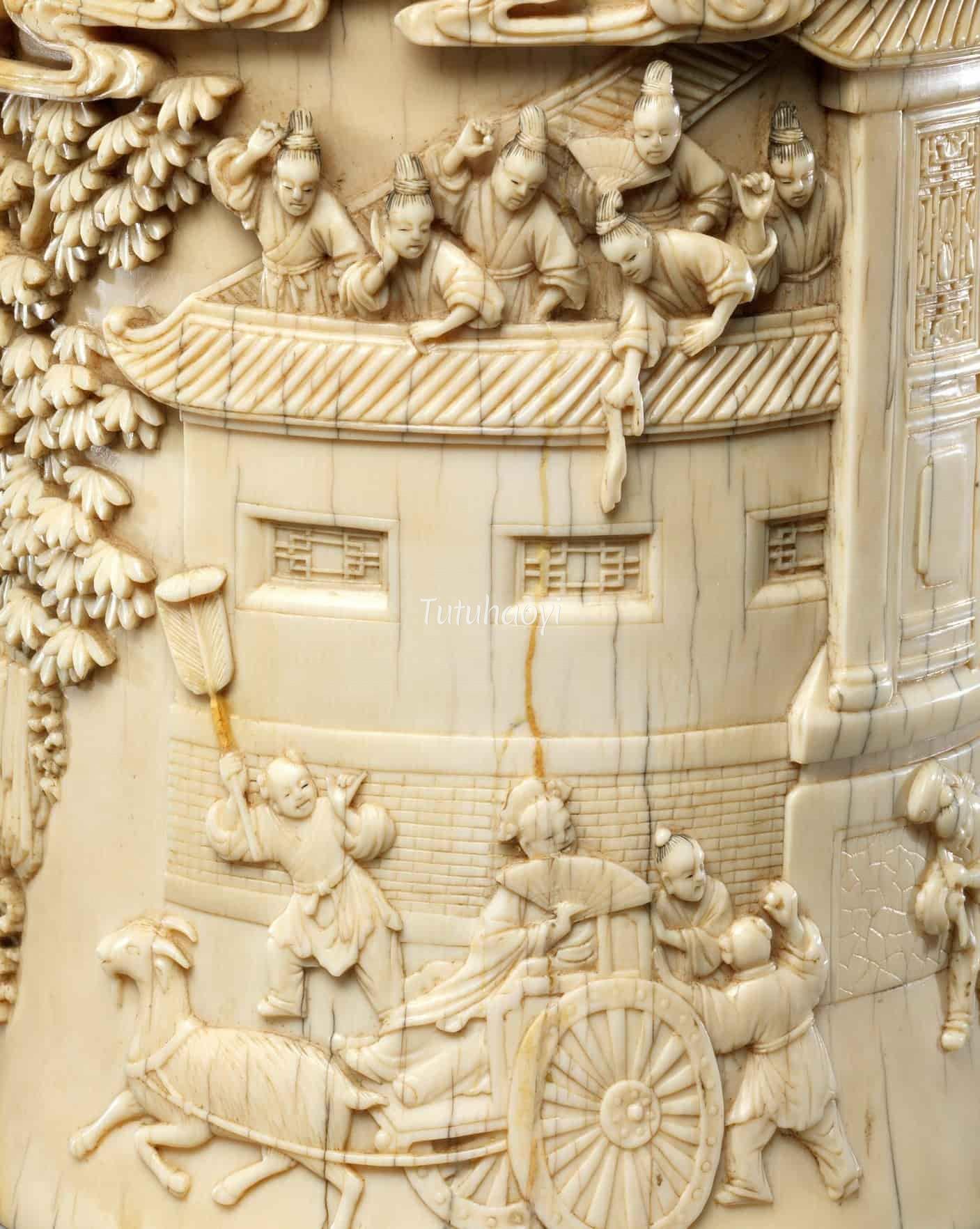
I am happy to see their present correct explanations of the scene on both the ivory piece and their magnificent Kangxi famille-verte dish on the MET website.
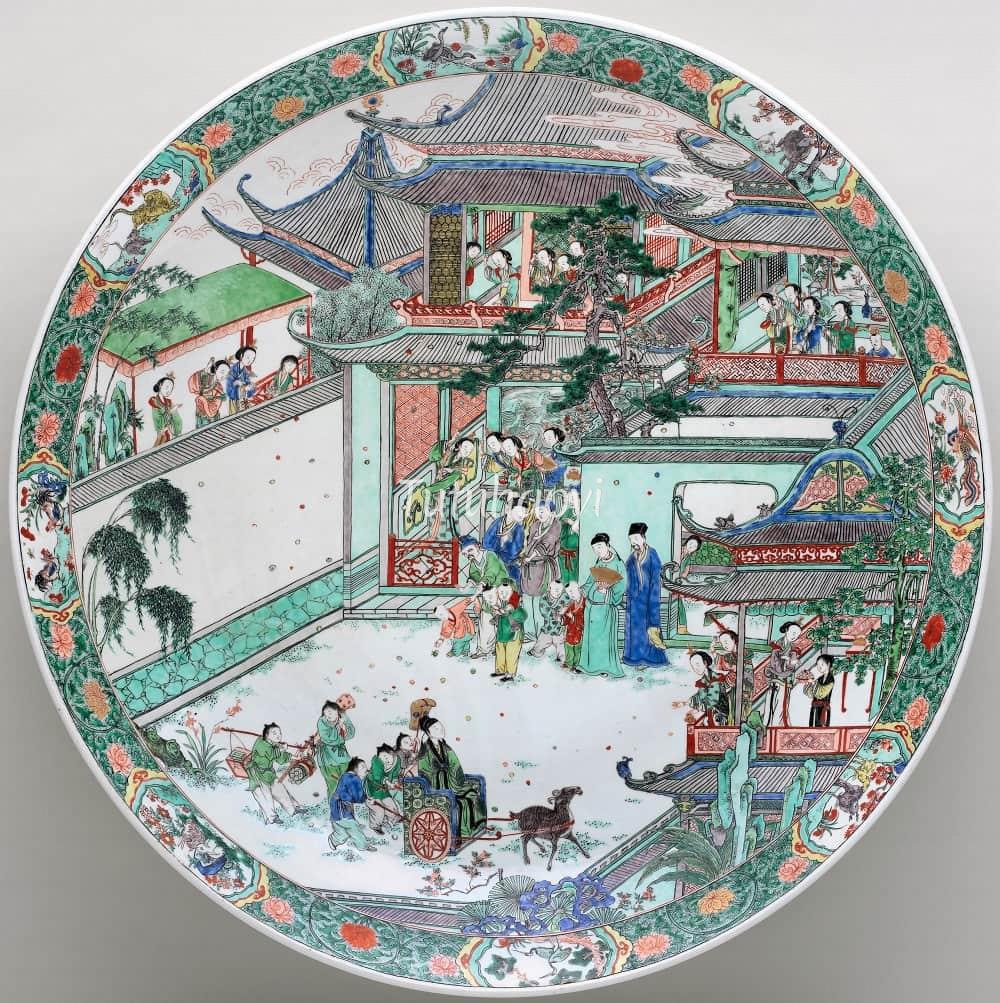

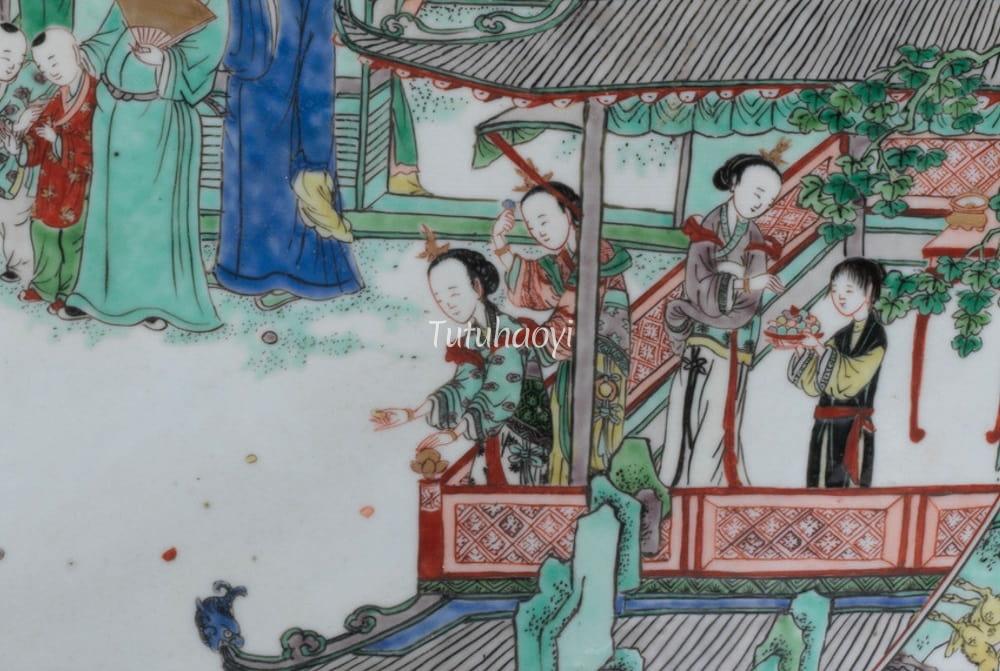
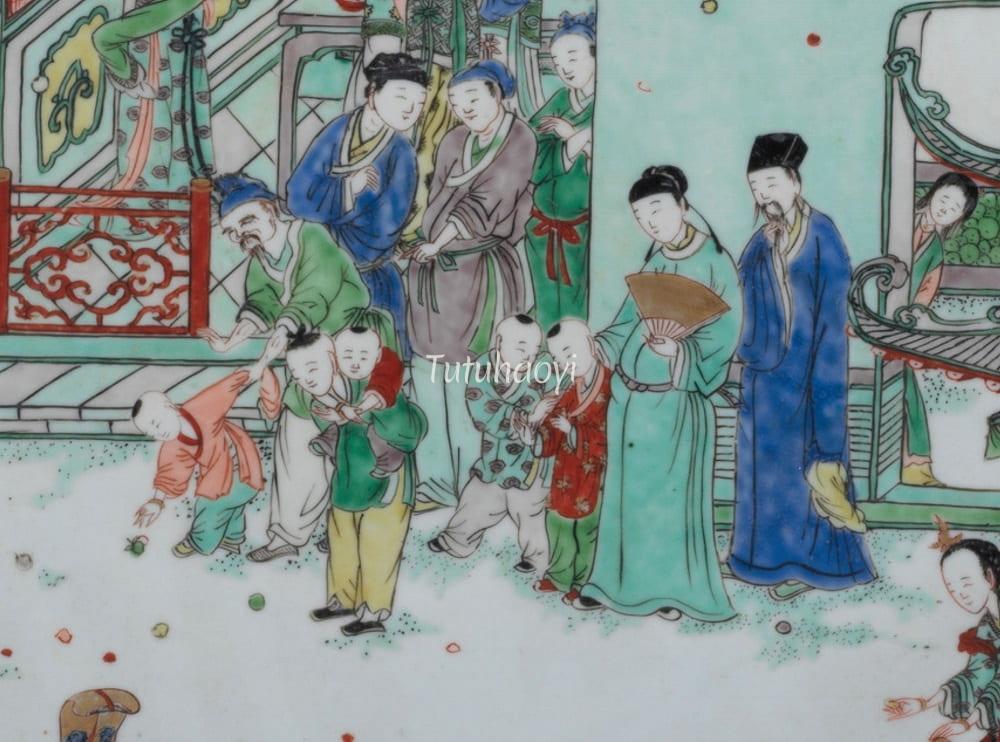
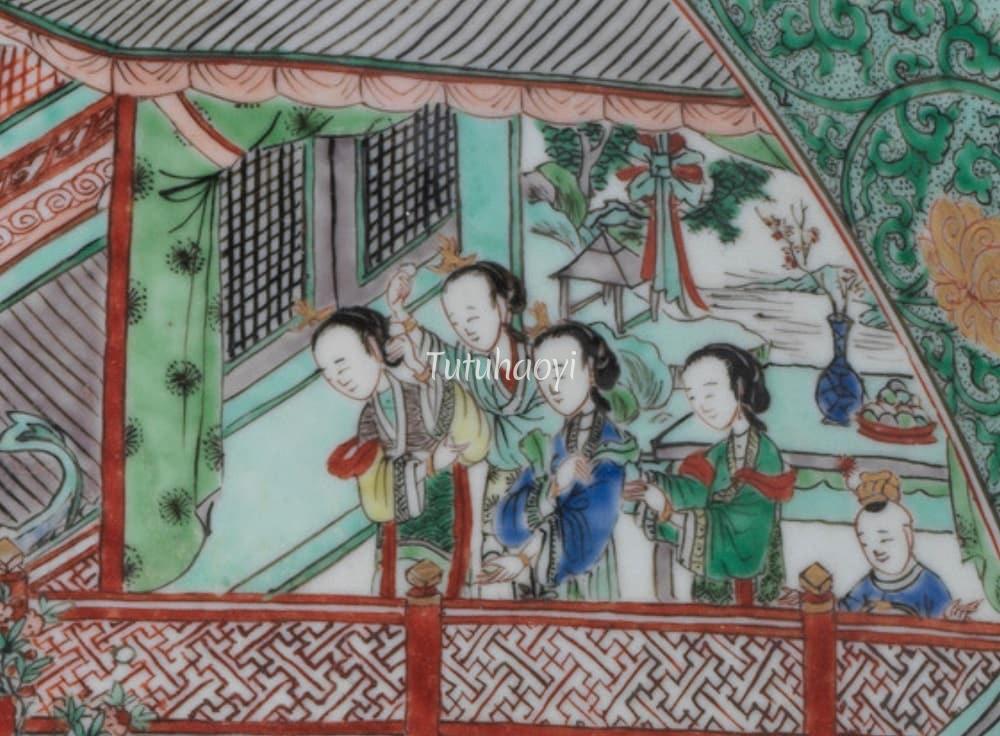

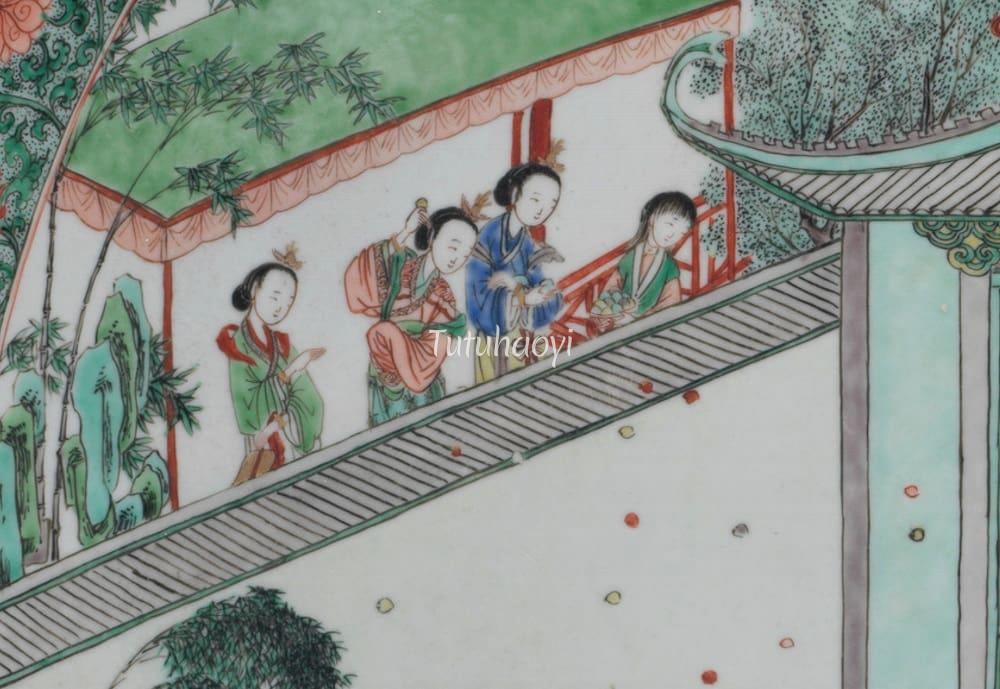
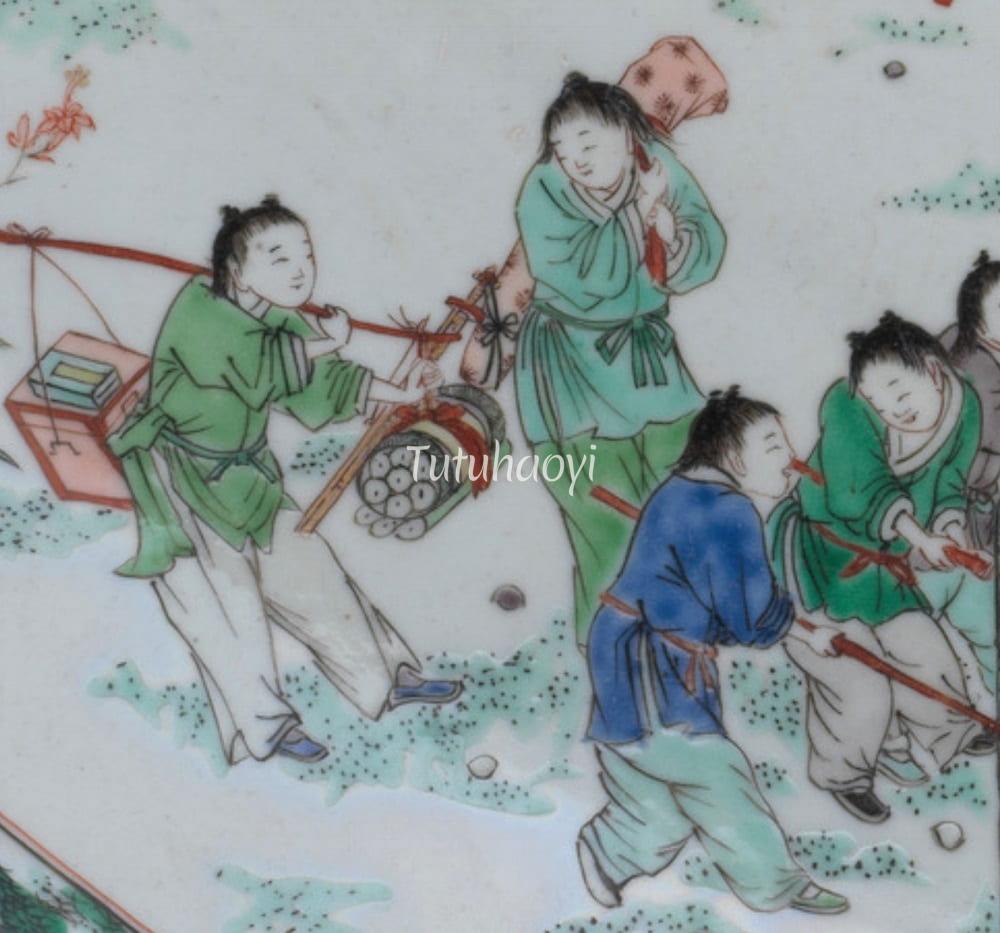

References:
倪亦斌:《掷果盈车数潘安,陈年旧事女看男》,《艺术世界》, 上海: 上海文艺出版社,2006-10, pp. 102–103;
倪亦斌:《看图说瓷》:《掷果盈车数潘安,陈年旧事女看男》, 北京: 中华书局, 2008, pp. 173–176
